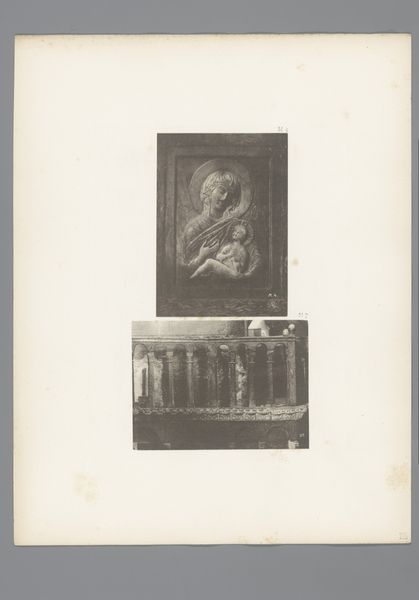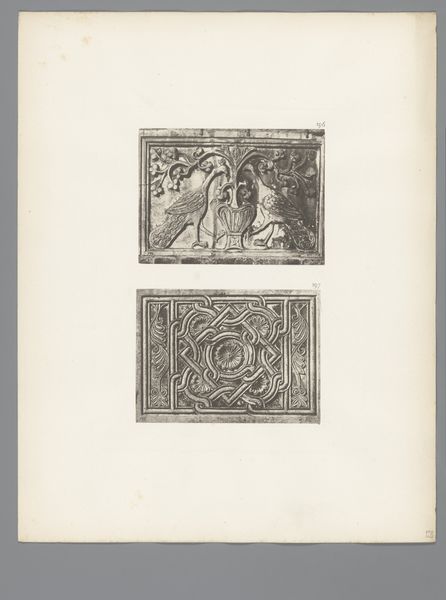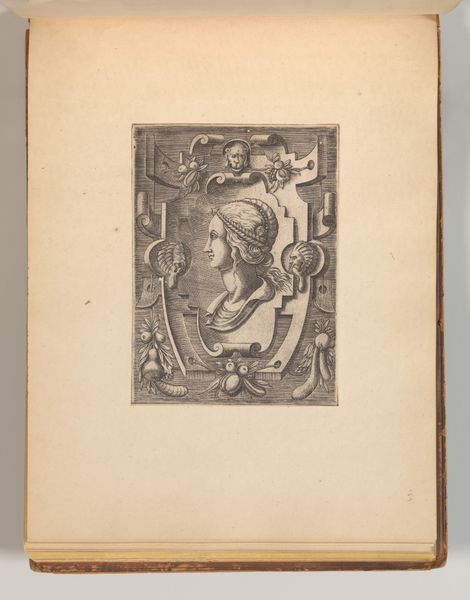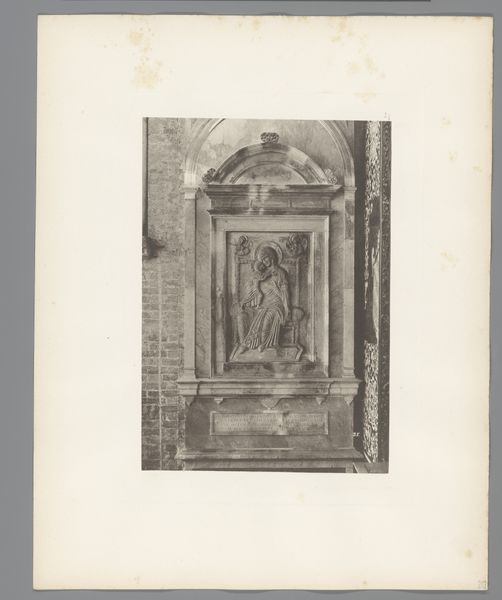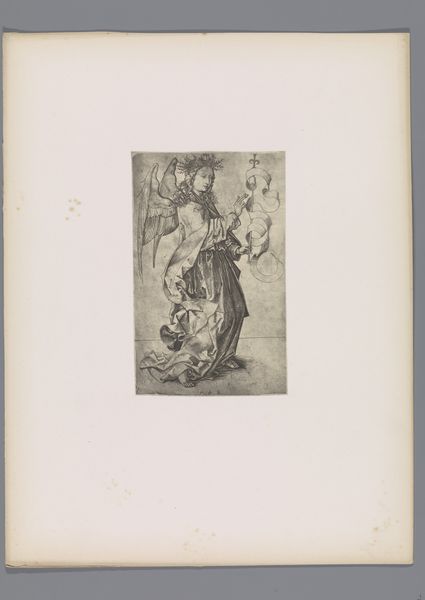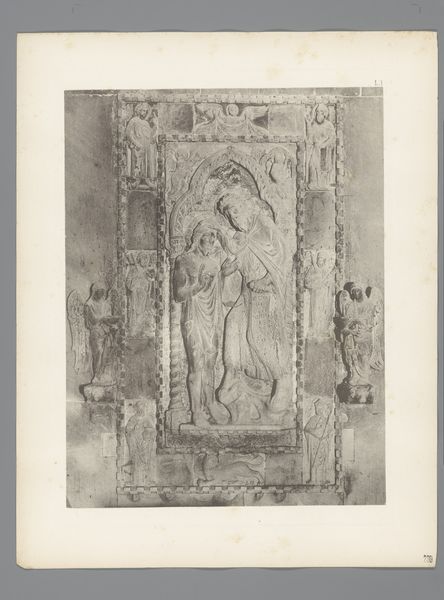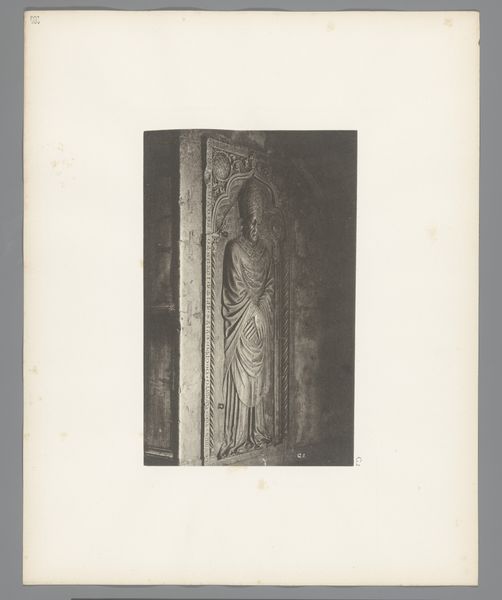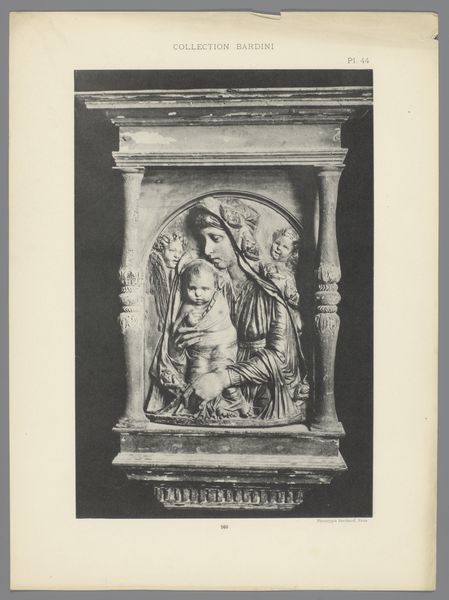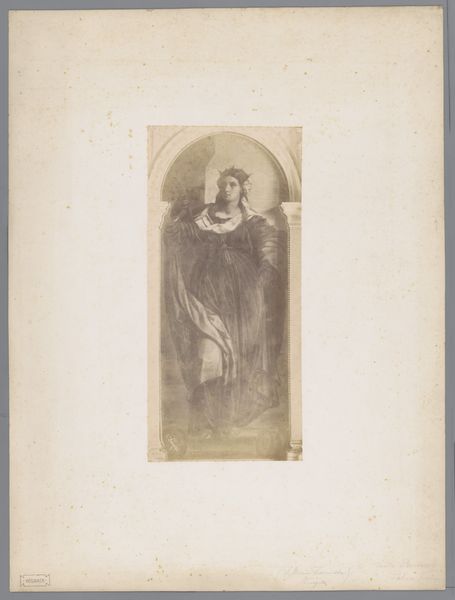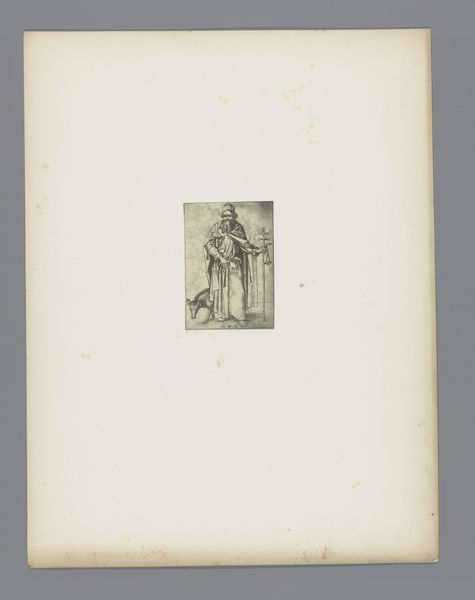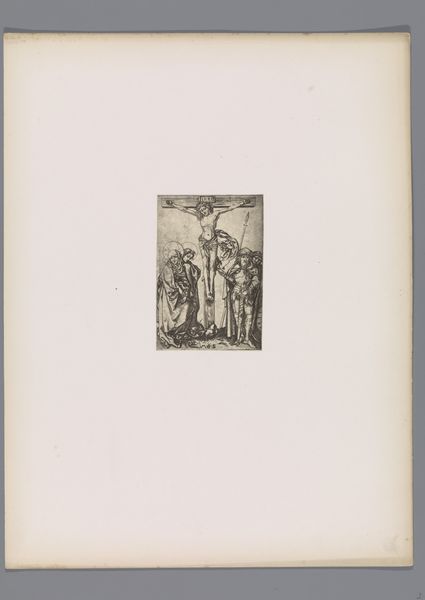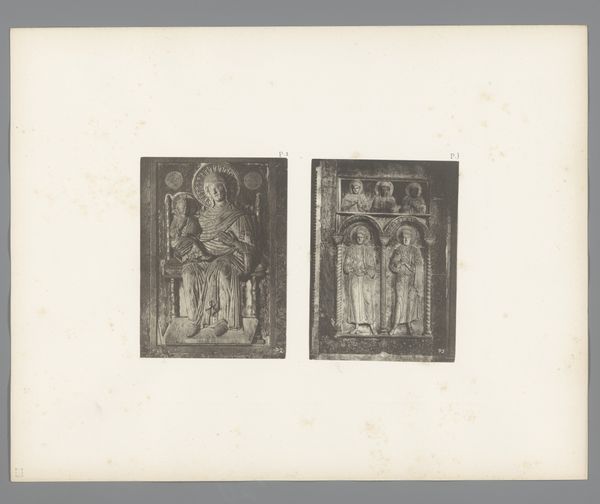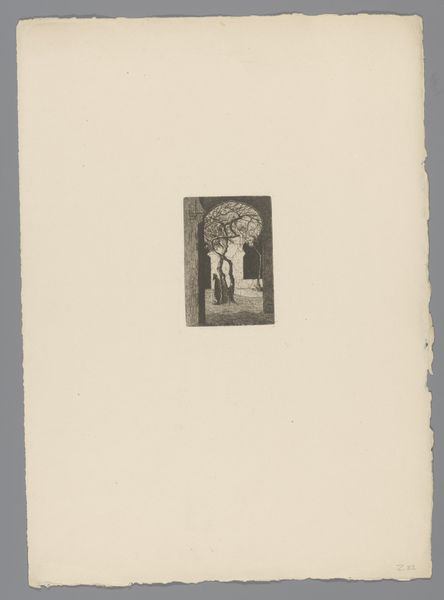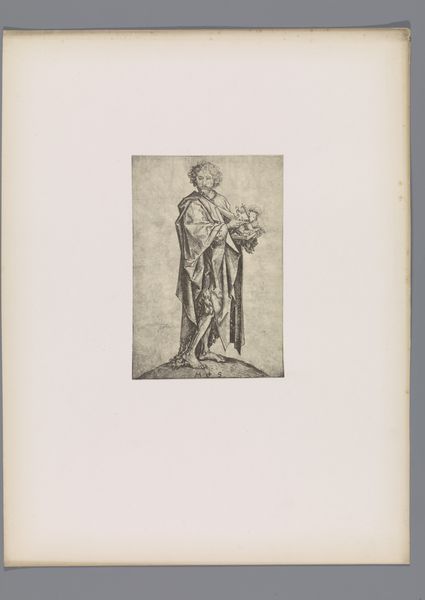
print, relief, photography, gelatin-silver-print
#
portrait
#
byzantine-art
# print
#
relief
#
figuration
#
photography
#
ancient-mediterranean
#
gelatin-silver-print
Dimensions: height 393 mm, width 310 mm
Copyright: Rijks Museum: Open Domain
Curator: This is a gelatin-silver print by Carl Heinrich Jacobi, taken before 1885, of a relief inside San Marco in Venice, depicting Mary and Christ. Editor: It's stark, isn’t it? Almost unsettling in its flatness. The silver print renders the relief as something quite clinical, divorced from the tactile reality of stone or plaster. Curator: The choice to photograph a relief in this way seems to highlight the inherent symbolism and power within the Byzantine artistic tradition. Notice how the halos are clearly defined, almost separate entities, emphasizing divine light and authority. The photographic medium further amplifies their glow, reinforcing these enduring visual cues of holiness. Editor: But that translation into photography… it really brings to the fore the question of how these religious objects were perceived, traded, consumed. The material reality, the quarrying of stone, the labor of sculpting... these are flattened out by the reproductive process of photography. It turns devotion into data. Curator: But doesn't that proliferation allow for wider access to these potent cultural symbols? It detaches the imagery from the physical confines of San Marco and circulates it. Mary holding Christ becomes accessible beyond the Venetian context. Editor: Perhaps. Though I find myself fixated on the question of what's gained and what's lost. We can see details, perhaps, but we lose the feeling of being in that sacred space, surrounded by the real, tangible manifestation of belief carved and crafted over time. What impact do you believe these photos had? Curator: By capturing sacred art in reproducible form, photography allows people to study and understand them more comprehensively, contributing to scholarship and broader cultural understanding. Furthermore, such replication, even without being in the original location, enables widespread familiarity with Byzantine art motifs. Editor: I suppose it democratizes access but simultaneously extracts it from its grounding. Curator: It seems the conversation remains open. Photography does more than document; it prompts discussion about the circulation and meaning of devotion across time and place. Editor: Absolutely. It forces us to consider the complex ways in which we engage with historical and sacred objects through mediation.
Comments
No comments
Be the first to comment and join the conversation on the ultimate creative platform.
